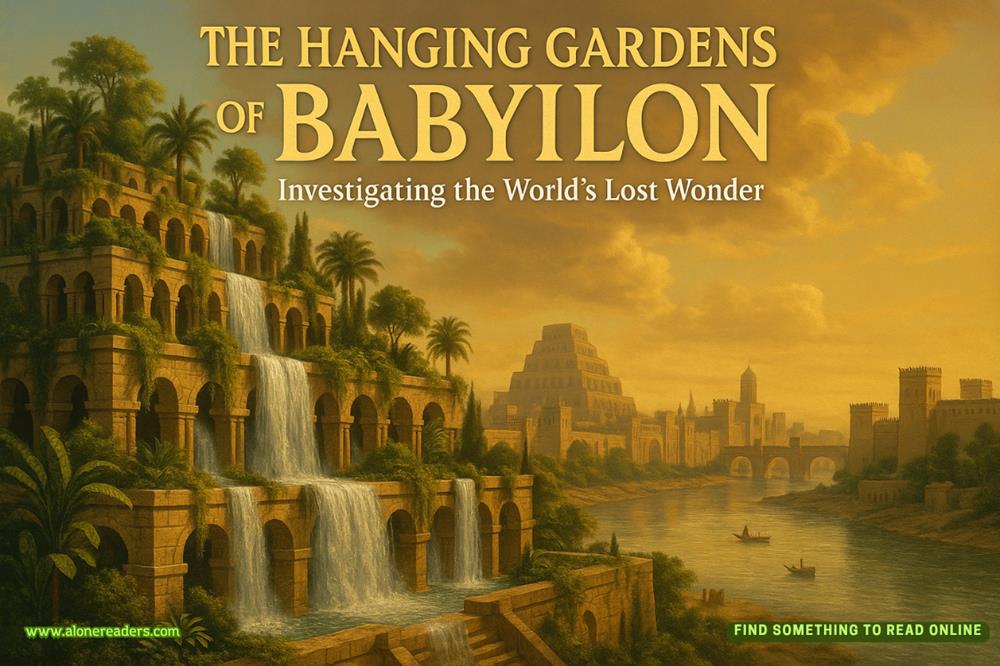Page 87 of The Outsider
“That’s the workshop,” Kimmy explained. “They prefer people go there instead of the house for trade. That’s usually where they are during the day anyway.”
She led the way to the door, and a bell tinkled cheerfully as we entered a spacious room with concrete walls and floors. A desk faced the door, and a thick binder lay open on what appeared to be a page of orders from customers. Scattered throughout the space were mannequins wearing half-made outfits, tables covered in measuring tapes, sewing needles, spools of thread, scissors, and sketches of clothing. In the far corner was a bench, surrounded by discarded shoehorns, foot measuring tools, and other equipment intended for shoemaking. Rolls of various fabrics were stacked on shelves at the back of the room, next to a door that led elsewhere in the building.
But what really stood out about the place was the walls: they were covered with paintings. Some were of clothing, but others depicted the landscape of the Valley, nature and animals, and abstract colour schemes. A blend of passion and skill, they were vibrant, eclectic, and beautiful. They lit up the room, and an ache opened in my chest. It’d been so long since I’d painted anything.
The distant hum of what I assumed was machinery came through the back door, along with a slender, well-dressed woman in her early to mid thirties. She was average height, with thick black hair that she’d braided to one side, and radiant copper skin with smile lines that gave her a pleasant, cheerful appearance. She wore woven bracelets and layered necklaces, and her left earring featured a long grey goose feather. Her deep purple dress featured small, intricate beading and embroidered floral designs that I could only assume she’d done herself. It might’ve been the loveliest article of clothing I’d ever seen.
“Welcome,” she said as she made her way over to us, and when she reached the front desk, she smiled at John and Kimmy. “So good to see you again, friends. I am glad you made it back, safe and sound. You have our gratitude for everything you’ve done for us in the Valley.”
John gave her a polite nod, while Kimmy grinned nervously. Asha shot her a look between amusement and disapproval.
The woman turned to me and Asha, reaching her hand over the desk. “I know we haven’t had the pleasure of meeting one another yet. I’m Nimkii. My family and I run this shop.”
After our introductions, I said, “I was just admiring the amazing paintings in this place. Did you create them?”
Nimkii beamed. “So glad you like them. They are my passion project…when I have the time. My son is only two, you see.”
I nodded enthusiastically. “I like to paint, too.”
“She’s an amazing artist,” John interjected. “You should’ve seen her mural back at the camp we stayed at. It was incredible.”
The obvious pride in his voice made me blush, but I continued, “I’d love to know where you get your paints.”
“I make them,” Nimkii said, her eyes twinkling. “Usually watercolours. I have spares that I’d be happy to trade for.”
I looked to John, who scoffed. “You don’t need my permission. We’ll take them, along with whatever canvas you have.”
“Wonderful,” Nimkii replied. “Now, I assume you’re here for clothes.”
“I need…everything,” I admitted. “So does Asha. I hope that’s alright.”
As if on cue, John placed a couple of PNCs onto the desk in front of Nimkii. Her attention snapped to them, and her eyes betrayed her need.
“That’s generous,” she said, raising her eyebrows. “We’ve needed more for weeks. Some of our automated equipment has stopped working. Thank you.”
John nodded. “Just make sure that Claire gets everything she needs…including a wedding dress.”
My flush deepened, and Nimkii’s face lit up.
“It’s always exciting when I get to design for a bride,” she said with a charming smile. “Let’s get started.”
She temporarily returned to the back room, calling to someone in an unfamiliar language. A moment later, a man similar in age to Nimkii and an older woman—who she introduced as her husband and mother—joined us. While Nimkii focused on me, the other two served Asha, Kimmy, and John.
“Your work is beautiful,” I said as she flipped through a sketchbook of designs. “Do you do everything by hand?”
“Oh, no,” Nimkii said with a laugh. “That’d take ages. Thankfully, we have a couple of industrial looms, which makes weaving much easier and faster. But we keep a herd of sheep for wool and grow cropslike flax, which we then often spin by hand. We use a mishmash of methods.”
She got to work taking my measurements, then assembled designs for a functional, pragmatic assortment of t-shirts, sweaters, pants, and undergarments, all suitable for working outside in all seasons.
All the while, we chatted happily about painting, swapping techniques and tips. Nimkii had a soft, affable manner that made her easy to talk to. She told me about her young son, Makade, who had already discovered a love for fingerpainting, and her Anishinaabe heritage, which fascinated me. In return, I traded stories about the Cave and my life as a teacher.
Eventually, we finished with the everyday clothes, and I stepped down from the stool she’d had me stand on.
“We’ve got the boring things out of the way,” Nimkii said with a wink. “Now, we’ll fit you for a sweet little dress to wear on special occasions. Something pretty.”
“That’s probably not necessary,” I replied, but my protest was weak. I wanted to see what kind of magic she could weave.
Nimkii raised an eyebrow. “Your fiancé said to get you everything you need. And I say you need a pretty dress.”















